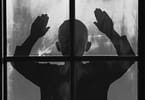The National Portrait Gallery in London has opened its first exhibition of portrait drawings by some of the outstanding masters of the Renaissance and Baroque.
The drawings include some of the hidden treasures of Britain’s finest private and public collections, a rich source of European old master drawings.
The portraits by artists such as Leonardo da Vinci, Dürer and Holbein have been selected not only because they are extraordinary records of an artist’s skill and a sitter’s appearance, but because they appear to capture a moment of connection, an encounter between an artist and a sitter.
Some of the people depicted in these portraits can be identified, such as the emperor’s chaplain or the king’s clerk, but many are faces from the street – the nurse, the shoemaker, and the artist’s friends and pupils in the studio – whose likenesses were rarely captured in paintings during this period.

Old woman wearing a ruff and cap, Jacob Jordaens
Highlights include 15 drawings donated by The Queen from the Royal Collection. Among these eight are by Hans Holbein the Younger. There is a group of drawings produced in the Carracci studio from Chatsworth; and the British Museum’s preparatory drawing by Albrecht Dürer for a lost portrait of Henry Parker, Lord Morley, who had been sent to Nuremberg as ambassador by King Henry VIII.
Dr. Nicholas Cullinan, Director, National Portrait Gallery, London, says: “While our Collection includes Holbein’s magnificent and monumental ink and watercolor drawing of Henry VII and Henry VIII from c.1536–7, remarkably, the National Portrait Gallery has never staged an exhibition devoted to the practice of portrait drawing during the European Renaissance. While the sitters’ identities are often unknown, their encounters with the artist are preserved in drawings that vividly demonstrate the creative moment that lies at the heart of many of the greatest portraits. Some of the drawings were perhaps never intended to leave the artists’ studios, but are arguably amongst the most engaging and powerful impressions of personal likeness in the history of art.”

Man with shoulder-length hair, unknown Venetian artist
Dr. Tarnya Cooper, Curatorial Director, National Portrait Gallery, London, and co-curator of The Encounter: Drawings from Leonardo to Rembrandt, says: “Part of the appeal in looking at portrait drawings is that they seem to speak to us directly without embellishment or polish; in contrast to painted portraiture the graphic process appears unmediated by the artfulness of technique. Some of the portrait drawings in this exhibition were executed at speed, capturing a fleeting moment in time, while others were more finished and controlled, yet still appear to have an honesty and integrity that captures a dynamic connection between artist and sitter.”
Andrew Marr, broadcaster, writer, and artist, says: “There is something exciting about seeing the very scratches and smudges made by the fingers and crayons of the finest artists, from Leonardo Da Vinci to Rembrandt. There is a page of Rembrandt drawings, clearly done at breakneck speed, showing male faces, tousled hair and a woman breastfeeding, which bring you immediately into his room in 1636, as if it was here and now. There are Holbein drawings of wary youths from the court of Henry VIII so fresh you could bump into them in half the bars of London tomorrow; this exhibition is like being shoved into a party full of characterful, unforgettable strangers.” [Mail on Sunday Event Magazine, July 9, 2017]

Study of a nude man, Leonardo da Vinci
The Encounter: Drawings from Leonardo to Rembrandt brings together forty-eight portrait drawings by artists who worked throughout Europe, including Antonio di Puccio Pisano (Pisanello), Leonardo da Vinci, Albrecht Dürer, Francesco Salviati, Hans Holbein the Younger, Annibale Carracci, Gian Lorenzo Bernini, Anthony Van Dyck, and Rembrandt van Rijn.
Professor Jeremy Wood, contributor of an essay on collectors and the popularity of portrait drawings in Britain in the catalogue for The Encounter: Drawings from Leonardo to Rembrandt, says: “Many of the pioneering British collectors of European drawings were artists, and, even more strikingly, often portrait painters. This undoubtedly sharpened their interest in buying the drawings and their understanding of how these vivid likenesses had been captured on paper.”

Young boy wearing a white ruff and fur collar, School of the Carracci
The exhibition came about as a result of the Gallery’s continuing interest in exploring the practice of making portraits in a variety of media throughout history. By bringing together an important group of drawings, The Encounter: Drawings from Leonardo to Rembrandt explores what the study of European portrait drawing can tell us about artistic practice and the process of sitting.
By including a display of the types of drawing tools and media used – from metal point to colored chalks – and considering the individuals depicted in these often intimate portraits, many of whom remain unidentified, the exhibition shows how these artists moved away from the use of medieval pattern-books as source materials, to study the figure, and the face, from life.
Accompanying the exhibition will be a rich program of talks and workshops exploring the artist’s techniques and practices with contributions from a range or art historians and contemporary artists.
Jenny Saville, artist, says: “Drawing is an equation of nature. It’s as instinctive as thinking and is the first physical point of contact in the world of imaginative thinking, whether you’re drawing a head, a map, designing a chair, a building or an iPhone.”
هن آرٽيڪل مان ڇا وٺو:
- Some of the people depicted in these portraits can be identified, such as the emperor's chaplain or the king's clerk, but many are faces from the street – the nurse, the shoemaker, and the artist's friends and pupils in the studio – whose likenesses were rarely captured in paintings during this period.
- The portraits by artists such as Leonardo da Vinci, Dürer and Holbein have been selected not only because they are extraordinary records of an artist's skill and a sitter's appearance, but because they appear to capture a moment of connection, an encounter between an artist and a sitter.
- Some of the portrait drawings in this exhibition were executed at speed, capturing a fleeting moment in time, while others were more finished and controlled, yet still appear to have an honesty and integrity that captures a dynamic connection between artist and sitter.























